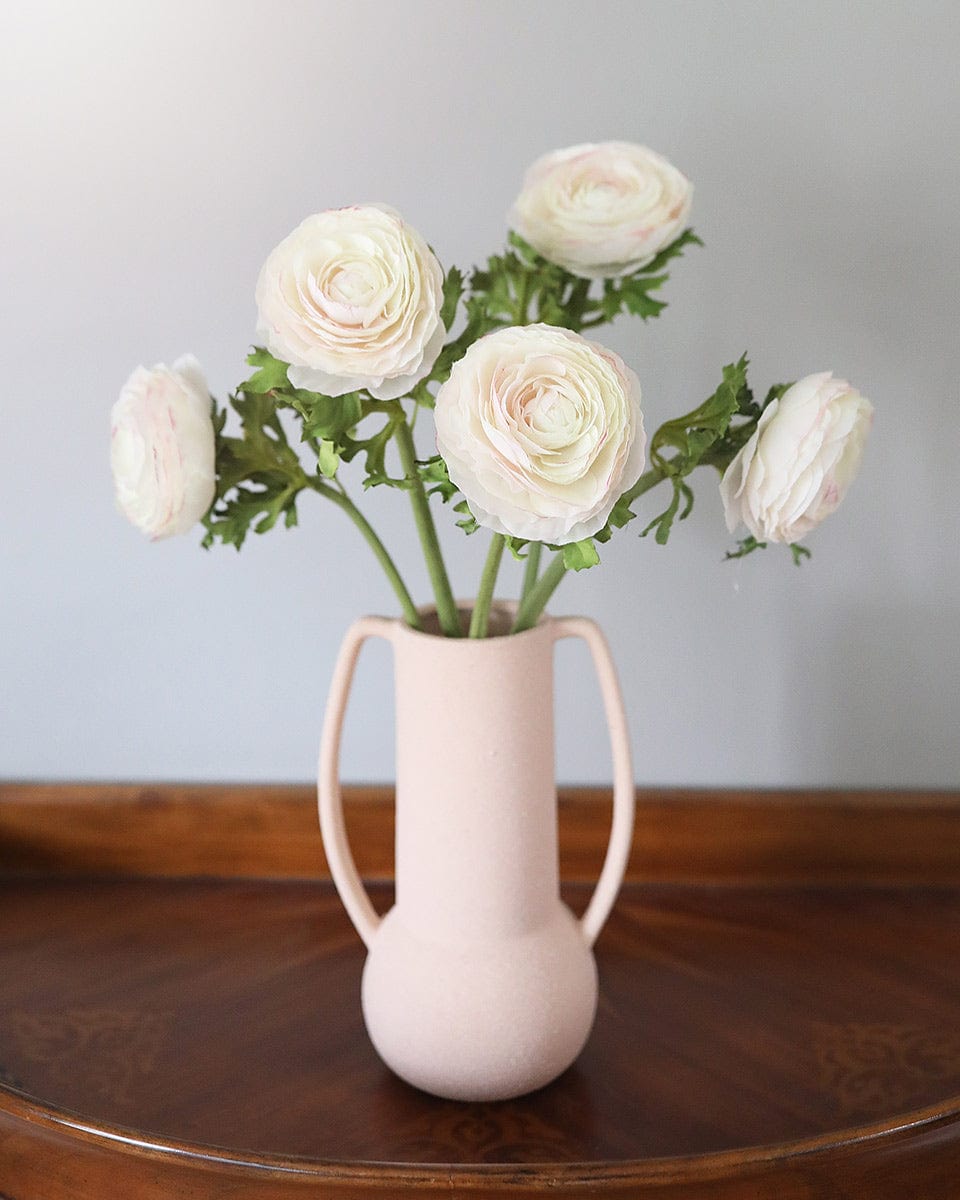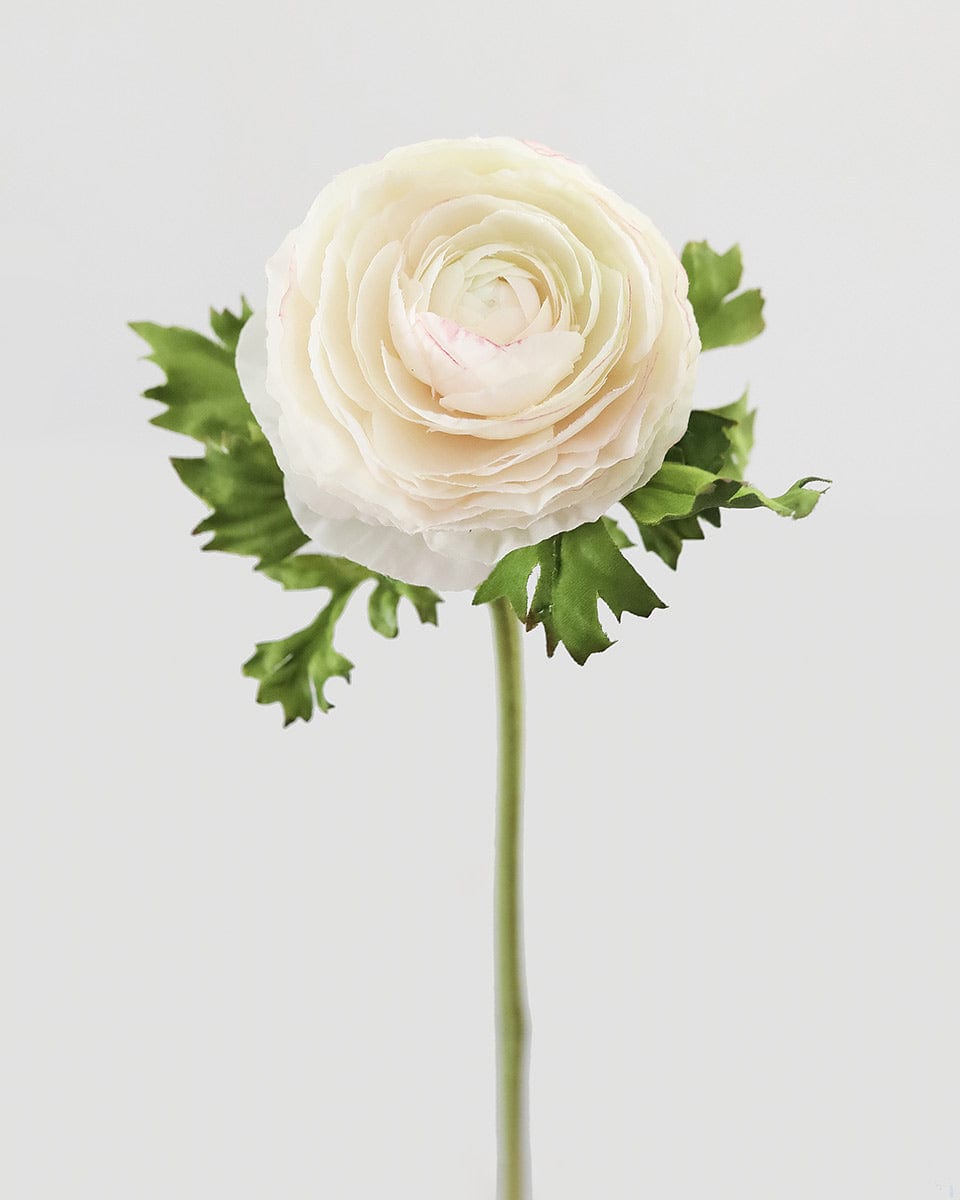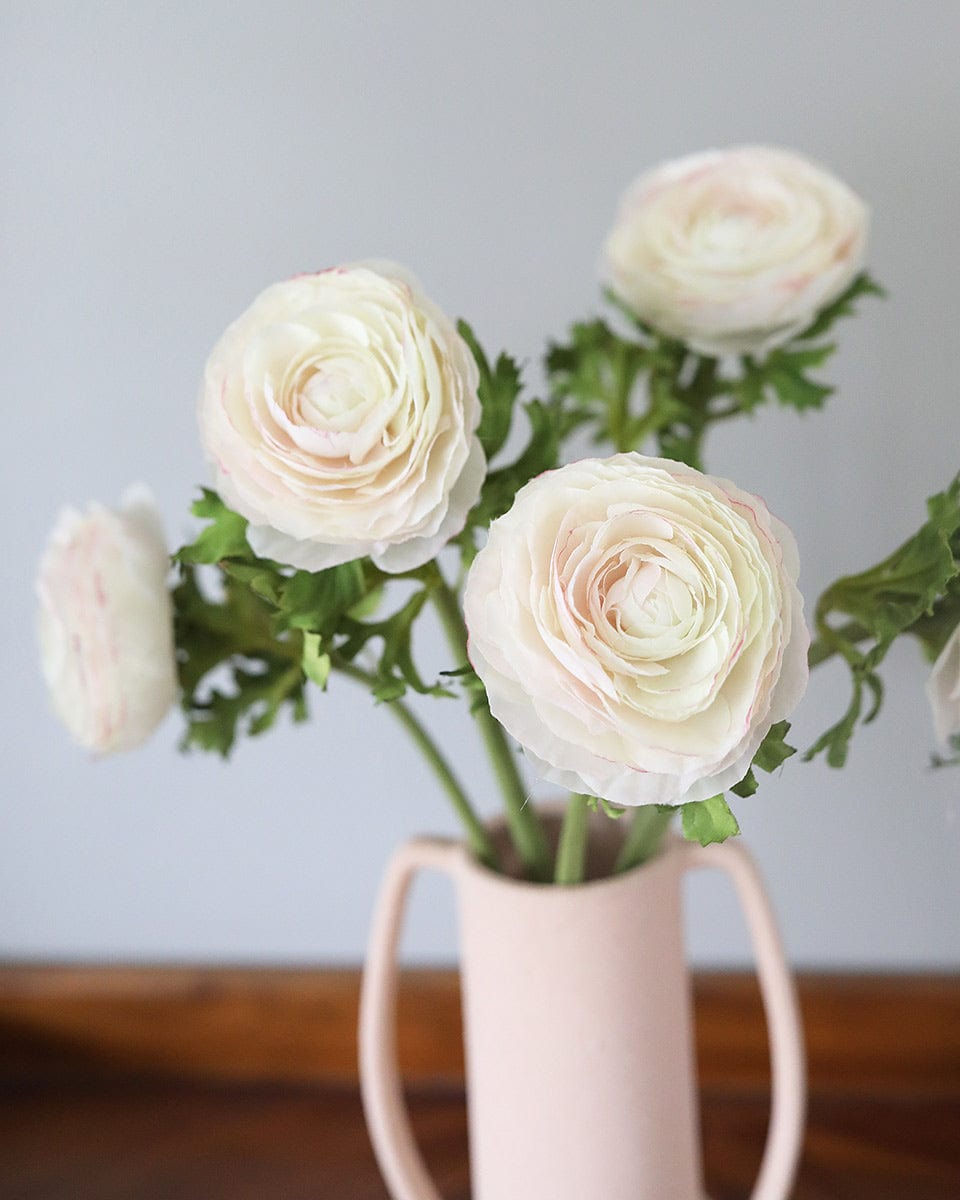



As Seen on
































































































































































More About This Stem
The artificial ranunculus flower is an enchanting addition to elevate your decor with timeless elegance. These delicate blooms exude a natural charm that perfectly mimics the beauty of real flowers. Each petal is meticulously crafted from high-quality materials and radiates a warm cream hue. This ranunculus offers a touch of understated luxury that effortlessly complements any interior design style. The versatile appeal makes ranunculus flowers a delightful choice for weddings, events, or simply adding a touch of nature's grace to your home.
Unlike fresh flowers, these silk ranunculus will maintain their pristine beauty all year round, bringing enduring joy without the worry of wilting. You can arrange them into stunning bouquets, charming centerpieces, or elegant floral arrangements!
60 Day Money Back Guarantee
World's Most Realistic Artificial Flowers
Shipped fast & securely from Chicago
Indistinguishable from Real Ranunculus
Design Endless Bouquets
Save Thousands on Fresh Flowers
Enjoy flawless blooms for years while saving thousands on fresh flower replacements
Beautiful Blooms Without the Sneezing
Perfect for sensitive spaces and allergy sufferers - all the beauty of fresh flowers with zero pollen or irritants.
The Pursuit of Excellence:
Making a Prestige Botanical
Trusted by 50,000+ Interior Designers, Wedding Planners & Flower Lovers


Beautiful Quality
Very pleased with my first order of real touch flowers. The camelias, white roses, and anemones are beautiful quality.. Already ordered again!

Cesia J.

Really Great Product
Really great product, looks like the photos. Delivered in a secure, carefully packed box in the time frame posted.

Kevin R.

Quality is Amazing
The flowers are the most beautiful I've used in arrangements. The red magnolias pop with vibrant color... the quality is amazing and worth it.

Jean M.

Very Realistic
Great quality. Very realistic. Added the pop of color to my vase

Letica A.
Read More Reviews
Why Choose Prestige Botanicals?
Prestige Botanicals
Other artificial flowers
Indistinguishable from Real Flowers
Handmade Construction, and hand painted finishes over 90 days
Rich, multi-tonal hues with natural color variations
Built to last decades
Flexible, shapeable stems and leaves for total styling control
High quality construction materials
60 Day Money Back Guarantee
Patanted unique 'Real Touch' Technology
Exclusive Product - not available anywhere else
Mass Produced
Pristine Packaging for Perfect Arrivals
- Our arrangements arrive as works of art, beautifully presented and perfectly preserved.
- Signature long boxes: Specially designed to protect each delicate stem.
- Premium tissue wrapping: Keeps every petal pristine and picture-perfect.
- Reliable delivery times: Tracked and scheduled to ensure your botanicals arrive exactly when you expect, in flawless condition.













